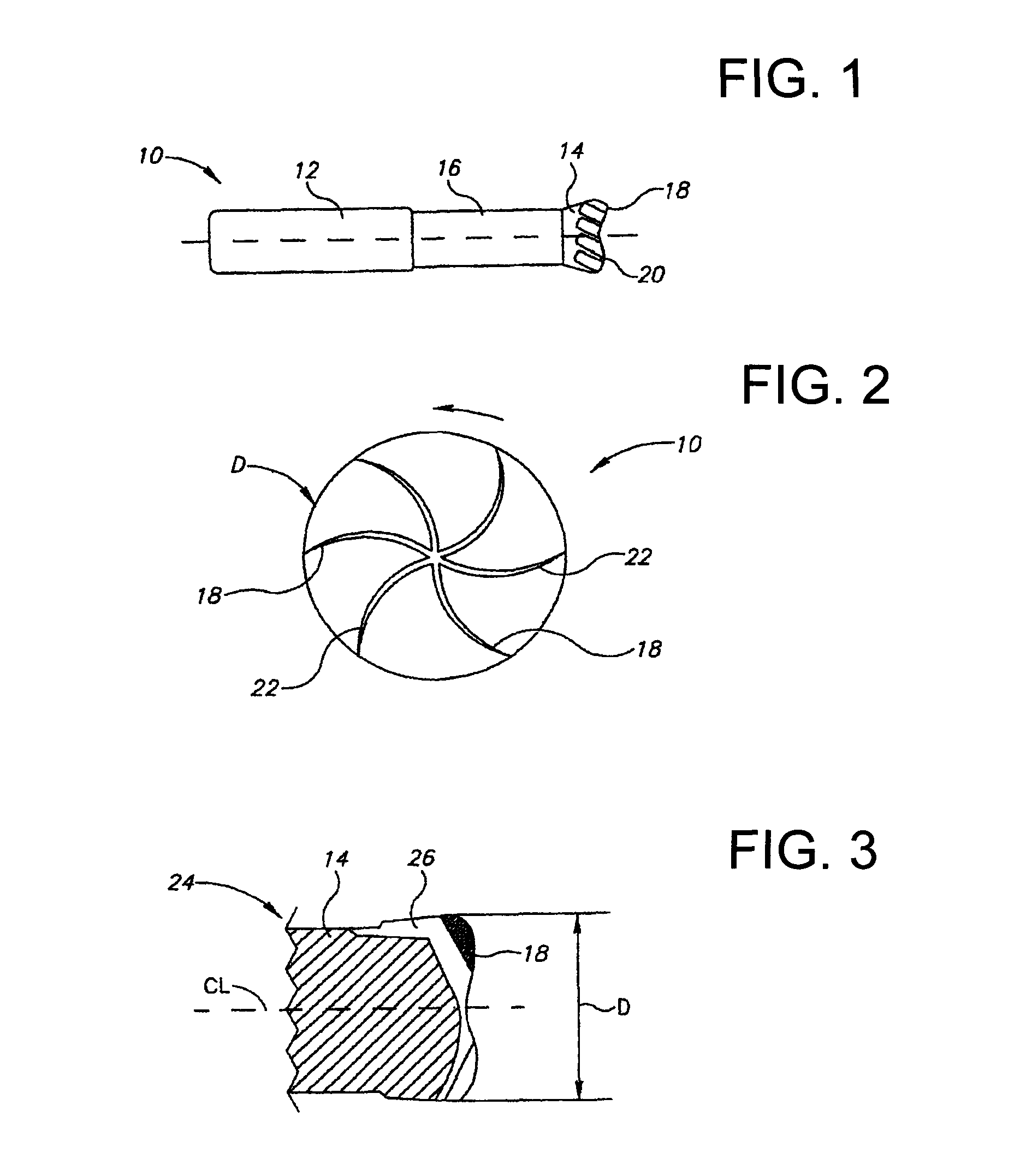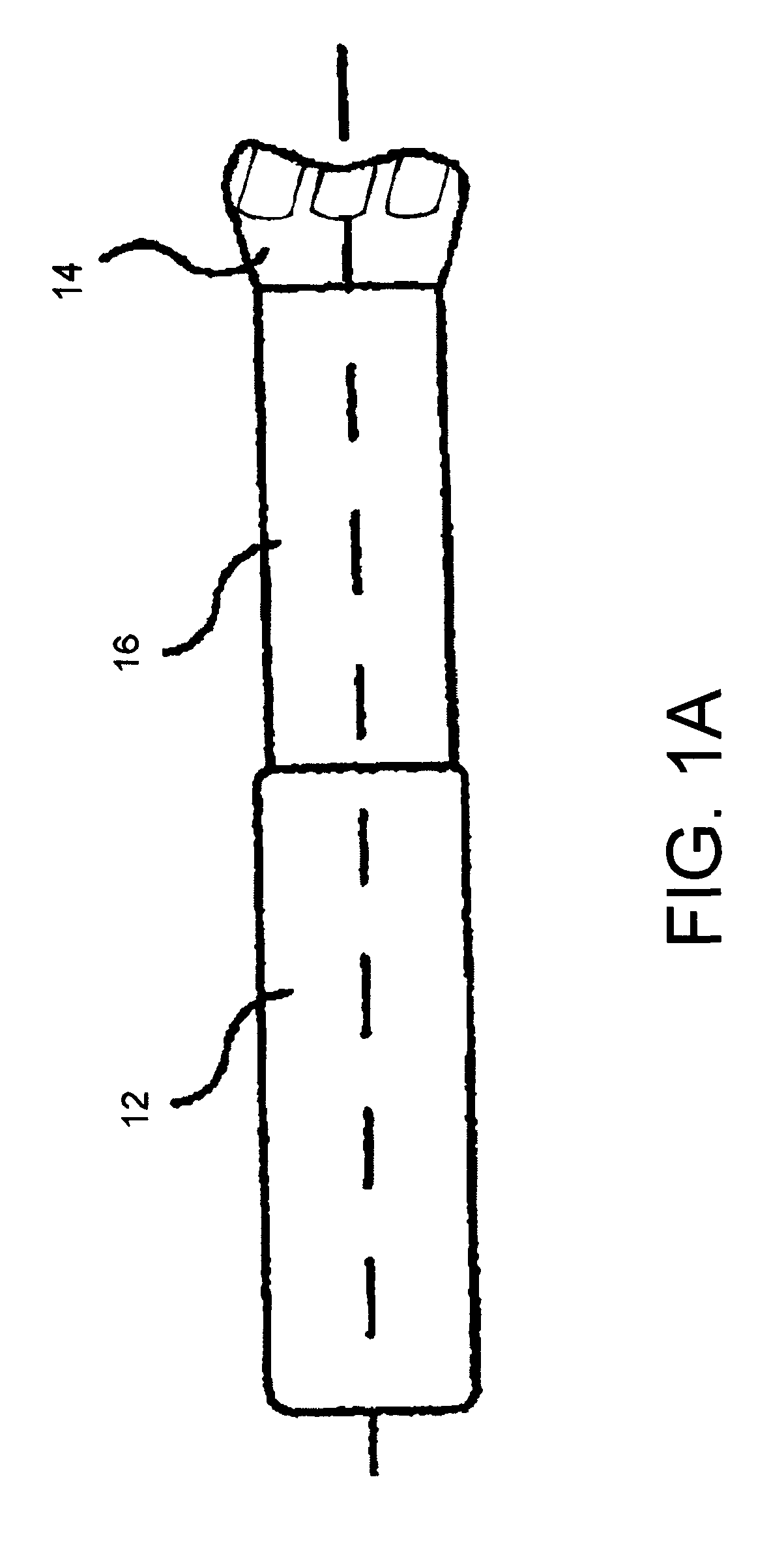Face milling cutter
a cutter and face technology, applied in shaping cutters, tool workpiece connection, manufacturing tools, etc., can solve the problems of screw holding inserts that tend to loosen, small and medium-sized holes that cannot be machined, and high precision is indispensable. , to achieve the effect of reducing tool breakag
- Summary
- Abstract
- Description
- Claims
- Application Information
AI Technical Summary
Benefits of technology
Problems solved by technology
Method used
Image
Examples
Embodiment Construction
[0064]There is seen in FIGS. 1 and 2 a milling cutter 10 for fast metal removal having a shank portion 12 connected to a cutting portion 14 by a neck portion 16. The cutting portion 14 terminates in a plurality of end cutting edges 18 positioned substantially radially from the axis of the milling cutter, the end cutting edges 18 being curved at least along part of their length as viewed facing the end 20 of the milling cutter cutting portion 14.
[0065]In one possible embodiment of the present application, the diameter of the shank portion 12 of the milling cutter 10 is about one hundred twelve and a half percent of the diameter of the neck portion 16. At the largest circumference of the cutting portion 14, the cutting portion 14 is about one hundred thirty-three percent of the diameter of the neck portion 16.
[0066]The tooth of cutting portion has a depth of about 0.1 D at each side of the outer diameter D, leaving a core equal to about 0.8D. In combination with the short flutes, the ...
PUM
| Property | Measurement | Unit |
|---|---|---|
| Length | aaaaa | aaaaa |
| Length | aaaaa | aaaaa |
| Fraction | aaaaa | aaaaa |
Abstract
Description
Claims
Application Information
 Login to View More
Login to View More - R&D
- Intellectual Property
- Life Sciences
- Materials
- Tech Scout
- Unparalleled Data Quality
- Higher Quality Content
- 60% Fewer Hallucinations
Browse by: Latest US Patents, China's latest patents, Technical Efficacy Thesaurus, Application Domain, Technology Topic, Popular Technical Reports.
© 2025 PatSnap. All rights reserved.Legal|Privacy policy|Modern Slavery Act Transparency Statement|Sitemap|About US| Contact US: help@patsnap.com



